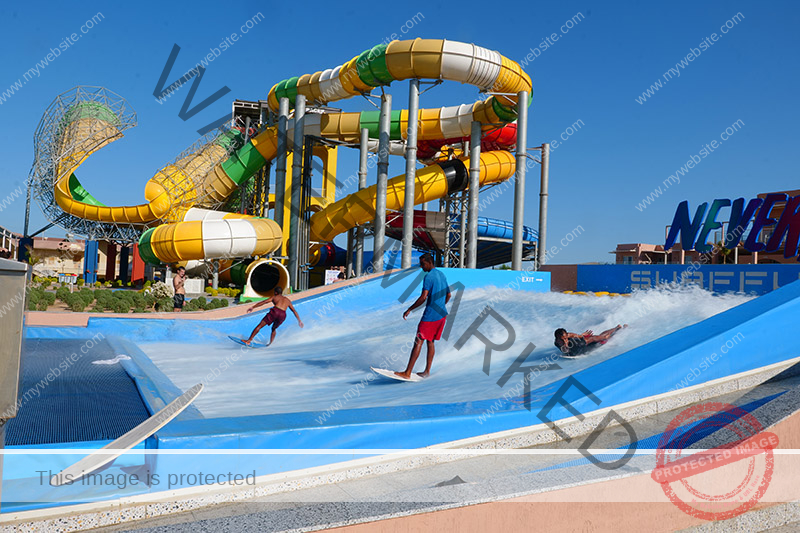The height design principle of water park slides

The Science Behind Height Design in Water Park Slides: Balancing Thrills and Safety
Water park slides are engineered to deliver adrenaline-pumping experiences while prioritizing rider safety. The height of a slide is a critical factor in achieving this balance, influencing everything from the intensity of the descent to the structural integrity of the design. Understanding the principles behind height selection reveals how engineers create unforgettable attractions that comply with global safety standards.
Gravity, Acceleration, and Rider Experience
The primary force driving the excitement of a water slide is gravity. When riders descend from a height, gravitational acceleration propels them downward, generating speed. The steeper the incline, the faster the acceleration, creating a more intense sensation of free-fall. For example, a slide with a near-vertical drop of 15 meters can produce speeds exceeding 40 km/h, triggering a surge of adrenaline.
However, height alone doesn’t determine the thrill level. The slide’s shape—whether it’s a straight plunge, a spiral, or a wave-like curve—alters how gravity interacts with the rider’s momentum. A taller slide with gradual curves allows for sustained speed, while a shorter, steeper one delivers a brief but intense burst of acceleration. Engineers use mathematical models to calculate the optimal height for each design, ensuring riders experience maximum excitement without compromising safety.
Material Strength and Structural Stability
The height of a water slide directly impacts its structural requirements. Taller slides need stronger materials to withstand the forces exerted by riders, water flow, and environmental factors like wind and temperature fluctuations. Fiberglass and reinforced plastic are common choices due to their durability, lightweight properties, and ability to be molded into complex shapes.
For instance, a slide standing 20 meters tall must account for vibrations caused by moving water and rider weight. Engineers conduct finite element analysis (FEA) to simulate stress points and ensure the structure can handle these forces without bending or cracking. Additionally, the slide’s foundation must be deep enough to prevent tipping, especially in areas prone to earthquakes or high winds. These calculations ensure that even the tallest slides remain stable over decades of use.
Safety Standards and Rider Demographics
Height restrictions are not arbitrary; they’re rooted in safety protocols designed to protect riders of all ages and sizes. International standards, such as those set by ASTM International and the European Committee for Standardization (CEN), specify minimum and maximum heights based on slide type, water flow rate, and intended user group.
For family-friendly slides, heights are typically capped at 10–12 meters to reduce the risk of injury from sudden stops or collisions. In contrast, extreme slides targeting thrill-seekers may reach heights of 25 meters or more, but these come with stricter requirements, such as enclosed tubes to prevent riders from falling out and automated braking systems to control speed. Age and weight limits are also enforced to ensure riders can safely navigate the slide’s twists and turns.
Psychological Impact and Market Appeal
Beyond physics and safety, height plays a psychological role in attracting visitors. A towering slide serves as a visual landmark, drawing attention and sparking curiosity. The anticipation of climbing to the top and gazing down adds to the thrill, even before the descent begins. Water parks often position their tallest slides near entrances or central areas to maximize their impact on first-time visitors.
Market research shows that slides exceeding 15 meters in height are particularly popular among teenagers and young adults, who seek novelty and intensity. However, parks must balance this demand with inclusivity, offering slides of varying heights to cater to families and older visitors. This diversity ensures a broader audience can enjoy the park, from toddlers taking their first ride on a gentle slope to adults conquering a vertical drop.
Environmental and Logistical Considerations
The height of a water slide isn’t determined solely by design goals; practical factors like land availability, local regulations, and climate also play a role. In earthquake-prone regions, taller slides may require additional reinforcement or shorter heights to minimize risk. Similarly, parks in windy areas might avoid excessively tall structures to prevent swaying.
Water supply is another consideration. Taller slides need powerful pumps to maintain water flow, which can increase energy consumption and operational costs. Engineers optimize designs to use water efficiently, such as incorporating recirculation systems or adjusting slide angles to reduce friction. These innovations allow parks to build taller slides without significantly impacting their environmental footprint.
